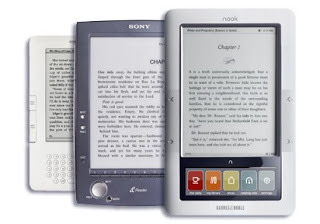Dedicated eReader Use Rises 250% in 2011

According to a new report by TDG Research, 20% of U.S. households with Internet access now also own at least one dedicated e-reading device. That represents a 250% increase from the 8% just twelve months earlier, at the end of 2010.
The new report focused specifically on "dedicated" reading devices - those designed and intended to be used solely, or primarily, for reading digital content, as opposed to multi-media devices - as this is a practical concern for current device manufacturers and retailers with a digital product line and content designed to be read on it.
With the recent introduction of lower priced, full-function tablets, there has been much speculation as to whether a market for dedicated e-readers would continue to exist, and if so, how significant it might be. Yet while multipurpose devices have begun to reach a price level more accessible to the general populace, e-reader prices have dropped proportionally as well, bringing them well within the grasp of average users rather than early adopters and tech aficionados. And this is almost certain to remain the case for years to come - we'll very likely see dedicated e-readers fall below the $50 mark within a year or so, with low-end models eventually retailing under $30 (subsidized largely by content sales). This would give them a great advantage over tablets for such institutions as schools and libraries, for example.
Conversely, it's unlikely multi-purpose tablet devices will fall below $100 for several years, although a $99 Fire or Nook Tablet is not unthinkable at some point down the line. Still, less functional devices will always remain less expensive than more complex machines, due simply to the cost of production, making them naturally more appealing to a broader audience. The fact that digital reading has increased at a more or less proportionate rate to the decrease in device cost only goes to prove the point. With e-reader prices dropping below $100 for the first time last year, digital adoption has hit its highest peak.
Finally, readers will be readers, and in the end what they want in their hands is a book, not a computer. The advantages of digital make dedicated e-readers attractive, and the added features are a great benefit, but it doesn't make the leap to app-based tablet computing a given (although for some this is certainly the case, and tablet saturation will surely continue to increase at its current remarkable rate as well). In addition, they are easier to use and lighter to hold or carry around, which makes them ideal for travel and commuting. In essence, tablets and dedicated e-readers will become the hardbacks and paperbacks of the future.
The 36 page TDG report, "Profiling eReader Users -- A Consumer Snapshot," is available for just $2,500.

Published on April 22, 2012 10:57
No comments have been added yet.



